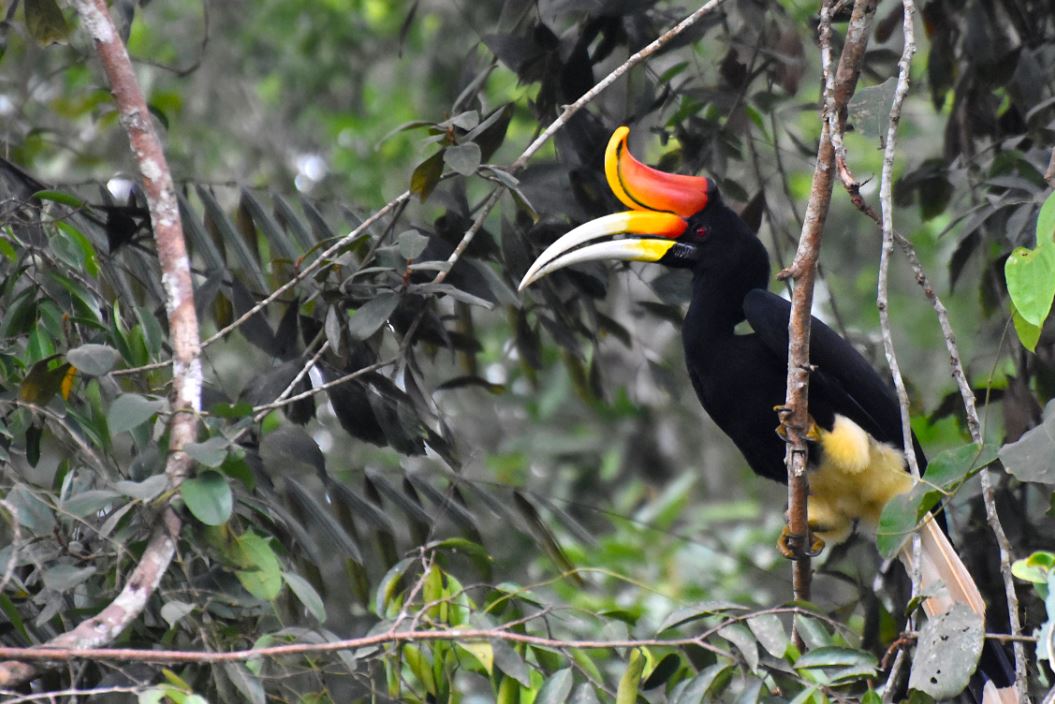Developing a sustainable long-term management strategy for the Kampar Peninsula requires a detailed measurement and understanding of its biodiversity.
In 2017 RER published a second report, Birds of the Kampar Peninsula: An Annotated Checklist, detailing the presence of 299 rare and endangered birds in the Kampar Peninsula peatland restoration forest area and surrounds. This includes the critically endangered Helmeted Hornbill (Rhinoplax vigil), listed in the IUCN Red List of Threatened Species.
Compiled by ecologists at RER, the checklist is a record of all the bird species that have been identified as of June 2017. As the first record of its kind to be compiled in the area, it will serve as a benchmark reference for bird life in Riau Province.
The new checklist compiles the results of several biodiversity assessments conducted since 2010 and indicates a significant increase in the number of bird species identified in the area.
The presence of species such as the White-winged Duck (Asarcornis scutulata) and Storm’s Stork (Ciconia stormi) indicate that the threats noted by Birdlife International such as forest clearance, logging, industry and infrastructure development for oil and coal mining, have diminished and land use change has stabilised on the peninsula. RER’s forest protection efforts since 2015 have created an environment where avian habitat and populations can flourish.
The striking and colourful Crimson-winged Woodpecker (Picus puniceus) makes its way up a tree branch in search of an insect meal. Woodpeckers play an interesting role in creating cavities within trees which in turn can be used by other cavity nesting species to rear their young.
In addition to the 46 species of water birds, more than 200 non-water bird species were also observed, including iconic bird species such as the White- breasted kingfisher (Halcyon smyrnensis), Grey-headed Fish Eagle (Ichthyophaga ichthyaetus) and the Rhinoceros Hornbill (Buceros rhinoceros).

RER has been participating in the Asian Waterbird Census (AWC) since 2017. AWC is an annual survey of waterbirds organized nationally by the Wetlands International-Indonesia Program in collaboration with the Directorate General of Forest Protection and Nature Conservation of the Ministry of Environment and Forestry. The AWC occurs in January each year throughout the Asia-Pacific region and collects information on waterbird populations while monitoring the status and condition of wetlands.
Every year, the RER team records an average of 286 birds from 12 species near the Kampar River, Kutup River, and Padang Island. The Purple Heron (Ardea purpurea) is the most commonly encountered species, and the Intermediate Egret is the second most sighted bird species by the Restorasi Ekosistem Riau (RER) team in the Kampar Peninsula.